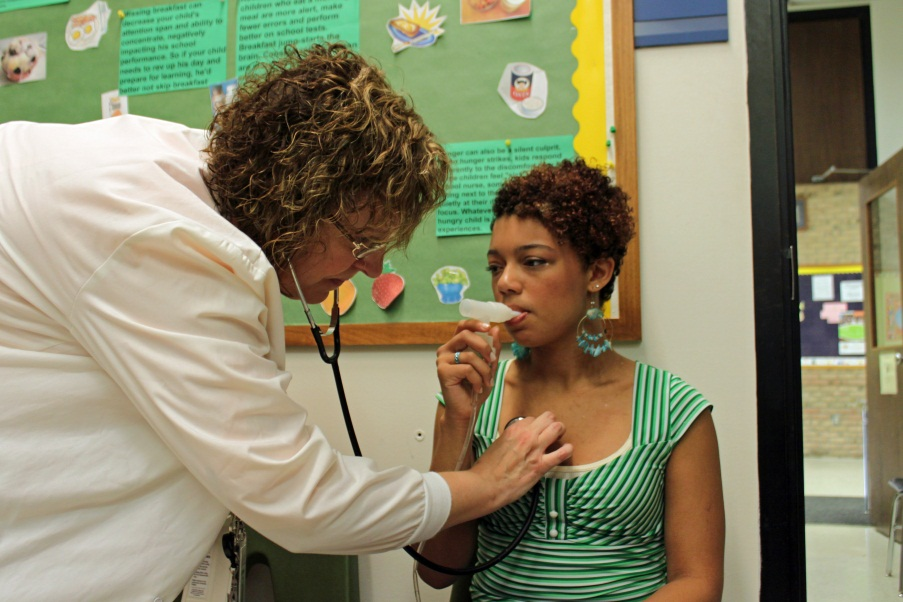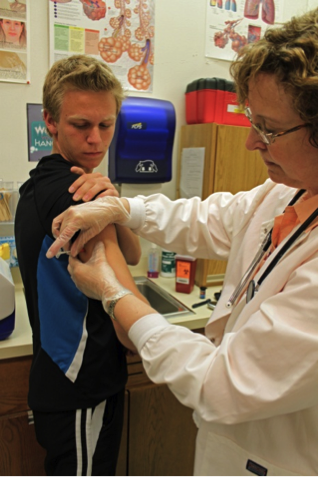
For more than a century, school nursing services have served a critical role in public health and ensuring the academic success of students in America. Particularly over the past five decades, school nurses have become more involved with addressing students’ mental, behavioral, and emotional issues, including substance abuse prevention. In fact, according to the 2007 Government Accountability Office report School Mental Health: Role of the Substance Abuse and Mental Health Services Administration and Factors Affecting Service Provision, school nurses spend one-third of their time providing mental health services, including those for substance abuse.

With a presence in 75 percent of the Nation’s schools, school nurses comprise a significant force of professionals who serve as prevention agents. School nurses are in touch with substance abuse trends within the school and in the greater community, enabling them to make educated assessments when students visit their offices.
Many school nurses also spend time in classrooms providing substance abuse prevention curricula, and some with advanced training start treatment support groups. School nurses often work in teams with other specialized instructional support personnel, such as school psychologists, social workers, and counselors, to address substance abuse issues in schools.
When the rate of prescription drug abuse began to increase rapidly, school nurses recognized the trend and took action. The National Association of School Nurses (NASN) got the word out by providing school nurses with data showing that more teens are abusing prescription drugs than illegal drugs (except for marijuana);[i] that prescription medications, along with marijuana, are the drugs of choice among 12- to 13-year-olds;[ii] and that every day, approximately 2,000 young people use a prescription pain reliever non-medically for the first time.[iii]
The NASN provides materials to help school nurses understand and promote drug use prevention, including:
- Current information and links to resources through a Weekly Digest e-News and a “Drugs of Abuse” page, found at www.nasn.org
- Opportunities for online continuing education programs that focus on prescription drug abuse in schools and communities: http://www.nasn.org/ContinuingEducation
- A comprehensive Teen Prescription (Rx) Drug Abuse School Tool Kit: http://smartmovessmartchoices.org/school-tool-kit
- Home 2 Homeroom – educational materials teaming parents with school nurses to prevent and address teen cough-medicine abuse: http://stopmedicineabuse.org/tools-to-take-action/school-nurses
- A school nurse representative in the Five Moms campaign (part of the Stop Medicine Abuse Initiative of the Consumer Healthcare Products Association): http://stopmedicineabuse.org/blog/details/welcoming-peggy-as-the-newest-five-mom
 NASN recommends the following tips for school nurses:
NASN recommends the following tips for school nurses:
- Familiarize yourself with the national effort and message led by the White House Office of National Drug Control Policy: http://obamawhitehouse.archives.gov/ondcp/prevention-intro/prevention-month%20
-
Order a free Smart Moves, Smart Choices toolkit, which contains:
- Curriculum video series
- Posters/stickers
- Dr. Drew segments
- Access to other resources
-
Team up with other specialized support personnel at your school to provide unified support of Prevention Month.
[i] Results from the 2011 National Survey on Drug Use and Health (NSDUH): National Findings, Substance Abuse and Mental Health Services Administration (SAMHSA), 2012.
[ii] Results from the 2011 National Survey on Drug Use and Health (NSDUH): National Findings, Substance Abuse and Mental Health Services Administration (SAMHSA), 2012.
[iii] SAMHSA, Center for Behavioral Health Statistics and Quality (formerly the Office of Applied Studies), National Survey on Drug Use and Health, 2009 and 2010.

